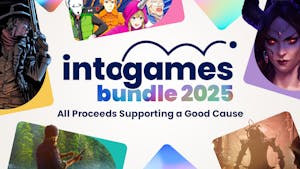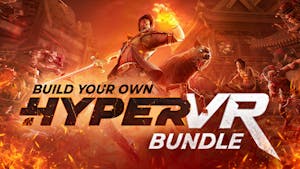 In global 4X strategy The Great Tribes, you won’t just recreate familiar nations using tired old blueprints. You will rather create a completely new civilization, guiding it from the earliest days of nomadic tribes to the era of rocket science. Remake the world as you see fit, utilizing large-scale terraforming. Or watch as the environment evolves organically through dynamic unscripted events. The game’s thoroughness goes far beyond cities, letting you manage individual districts and even specific buildings. Your rival? It’s a fair yet formidable AI that explores the world from scratch, facing the same unpredictable challenges as you. Enact your own laws, blend races and cultures, and mold your world exactly as you see fit!
In global 4X strategy The Great Tribes, you won’t just recreate familiar nations using tired old blueprints. You will rather create a completely new civilization, guiding it from the earliest days of nomadic tribes to the era of rocket science. Remake the world as you see fit, utilizing large-scale terraforming. Or watch as the environment evolves organically through dynamic unscripted events. The game’s thoroughness goes far beyond cities, letting you manage individual districts and even specific buildings. Your rival? It’s a fair yet formidable AI that explores the world from scratch, facing the same unpredictable challenges as you. Enact your own laws, blend races and cultures, and mold your world exactly as you see fit!

A WORLD IN MOTION
This is a living, breathing world—always changing, always adapting. Every choice you make sends ripples through the ecosystem. Shift the climate, reshape the land, and watch as your decisions (or those of formidable AI rivals) transform the environment. Terraform the terrain to unleash bold, unconventional strategies—creativity is rewarded! But beware: consequences unfold over time, woven from the threads of many choices, not just one. But remember! Even the noblest actions can spiral into unanticipated mayhem.

MANAGE SOCIETY AND THE ECONOMY
All civilizations are born in their unique cradle. At the start of the game, you will have access to six race types based on the starting biome—from icy wastelands to tropical jungles. It will be your decision whether to preserve your race's identity or blend cultures from different biomes and nations.
Establish control systems, impose your own laws, build your society, and utilize every instrument at your disposal to govern the inhabitants of your nations and others. The elements necessary to create a strong civilization are in your hands! Science, education, religion, internal and foreign economies respectivally.
May your treasury overflow, My Lord!

ADVANCED AND FAIR AI
In The Great Tribes, you’ll face—and collaborate with—an advanced AI that operates under the same conditions as you. The computer won’t feign ignorance of your actions or location. Instead, it will truly explore the world alongside you, piercing through the fog of war and making independent decisions based on real-time data.
Yet, this AI is also your ally, helping you build your civilization. Choose your level of involvement: automate production and governance, or micromanage every detail. Delegate politics, economy, or research to AI advisors, let it command your armies—or seize full control. Play your way, focusing only on what excites you. The power is in your hands.
Devlog #1: The Story of the Project
Greetings!
My name is Yuriy Ladik, and today I want to tell you how The Great Tribes came to be a strategy game Ive been working on for more than 8 years now. This project started out as a dream and gradually turned into a whole living world.
The spark of the idea (2016)
The idea for The Great Tribes was born in 2016 out of a desire to create something more than just another 4X strategy.
In my game, I wanted to show not only the development of technologies, warfare, and cities, but also the inner evolution of peoples their culture, social changes, and struggle for survival.
Back then, I had no idea how long and fascinating this journey would be.
First steps: concept and world generation
I spent the first year thinking through the overall concept of the game:
- Designing countries, regions, settlements, villages;
- Concepts for army-units, where one unit is an entire army;
- The concept of the first game era, where the first steps of humanity are shown in more detail;
- The ability to play as a nomadic tribe for as long as possible without founding the first settlements;
- First algorithms for unit movement and the first events in the game;
- Creating procedural map generation.

The first choice: 2D or 3D, Unity or Unreal (2017)
I set myself a truly ambitious goal. In my concept, the world map had to be large much larger than in other 4X strategies.
My first sketches were done in 2D using Javas internal capabilities:


But I ran into performance issues with rendering maps. That didnt suit me I needed hardware acceleration. I spent half a year studying and comparing the capabilities of Unity and Unreal. The possibilities of modern engines are impressive, but I couldnt achieve acceptable results for on-the-fly generation of maps and meshes.
At that point, I decided to go down what turned out to be the hardest path to write my own 3D engine in Java, strictly tailored to the needs of a turn-based strategy.
The first steps werent very pretty:



I worked alone, in the evenings and at night, between my main job. Work on the engine progressed by leaps and bounds.
The game was coming to life and gaining new colors:

First pain and first victories (20182020)
When the project got a bit stronger, I faced difficulties:
- Lack of convenient UI solutions;
- Weak performance with a large number of units;
- Challenges with the architecture of events and characters.

I spent a lot of time creating the beautiful mountains you can see in this screenshot.
In parallel with writing the engine, I introduced new gameplay elements into the game itself. One of my proudest achievements was adding navigable and non-navigable rivers and their crossings (2019).

The entire year of 2020 I spent optimizing the game engine and testing it on Linux. My laptop with Radeon RX Vega 7 delivered a stable 60 fps. The game even ran on an Nvidia GT 710.
Work was done on parallel loading and preloading of all game objects, and on a caching system.
Major evolution: systems and events
In 20212022, I focused on building game systems:
- Personalities each with traits, skills, and physical features;
- Religions;
- Cultures;
- Technology packs;
- Internal politics systems.
Crisis: when ideas overlap
Everyone who works on a long project eventually faces moments of doubt.
For me, that moment came when I saw some of the ideas I had been nurturing for years start appearing in other major strategy games. Not because someone took them but because the time had come. The game industry itself had gradually come to the same themes I was thinking about.
I dreamed of showing a world where not only conquests matter, but also the evolution of society. Where the internal dynamics of peoples their culture, morals, power structures play a key role in development. And when I saw similar mechanics being implemented by large studios, it hit me.
In those moments, its very easy to think: "Why continue? Everything I wanted to do has already been done..."
For a while, I really felt the weight and even a loss of meaning. After all, I wasnt trying to "release faster" or "compete" I just wanted to create a world that would live by its own rules.
But the more I thought about it, the clearer I understood. Yes, ideas can be similar. Yes, parallel development in the industry is common.
But no one will make my world the way I will.
Its my vision, my love for details, my consistency of decisions that make The Great Tribes unique.
Since then, Ive been working not to compare with other projects. Im working for the sake of the idea itself, for the world that will one day come alive for other players.
A new level: performance, graphics, models, user interface
In recent years, Ive worked on improving the overall performance and graphical state of the project:
- Optimization of the game server;
- Optimization of the client renderer;
- New UI;
- General graphics level.

Out into the world
2023 and 2024 were busy for me not only in terms of development. I took part in several game events both online and offline. At some of the meetings, I was even joined by people who had contributed to the development.

I got to meet interesting people and gather feedback. There was criticism and constructive comments it was all very motivating and pushed the project forward.

Its a great feeling when kids play your game.
It was a priceless experience to communicate live and watch people play your game.
At one event, I even invited a cosplayer dressed as one of our characters.



Today
As of today, The Great Tribes includes:
- 150 events and scenarios involving wildlife;
- Over 200 events and scenarios involving neutral villages;
- Events related to interactions with neutral units;
- A terraforming system;
- A deep system of personalities and generations;
- Procedural world generation with 30 different map types;
- Settlement generation;
- A portrait system with variations for personalities;
- 6 races 48 characters;
- 12 types of wildlife, 60 vegetation models;
- More than 500 building models.
Friends of the project
Although The Great Tribes started as a completely solo project, over time people who believed in the idea began to gather around it.
Over the years, Ive been helped by wonderful people:
- Artists who created concept art, loading screens, and character portraits;
- 3D modelers who worked on early versions of world objects;
- A composer who gave the game its atmospheric music;
- A narrative designer who helped structure events;
- A UI/UX designer;
- Several programmers who each made small but important contributions to the game systems;
- People who made invaluable contributions by suffering with me through bug hunts and testing all the game systems.
Each of them left their mark on the project. And Im sincerely grateful to everyone who gave their time, talent, and warmth to The Great Tribes.
Thank you
I want to say a huge thank you to everyone who supported me along the way: friends, testers, blog readers. Your interest helps me move forward.
And of course, thank you to everyone who adds the game to their wishlist and follows the project! That gives me enormous motivation.
Theres much more ahead. See you in the next Devlogs!

Minimum Setup
- OS: Linux 6.+
- Processor: 4-core processorMemory: 4 GB RAM
- Memory: 4 GB RAM
- Graphics: Graphics card with support for OpenGL 4.3 4GB
- Storage: 15 GB available space
Recommended Setup
- OS: Linux 6.+
- Processor: 6-core processorMemory: 16 GB RAM
- Graphics: Graphics card with support for OpenGL 4.3 4GB
- Storage: 15 GB available space
[ 6487 ]
[ 1519 ]
[ 2422 ]














































